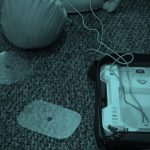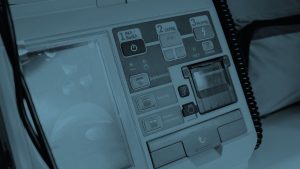
Automated external defibrillators (AEDs) are placed in public, but the majority of out-of-hospital cardiac arrests (OHCA) occur at home. In residential areas 785 AEDs were placed and 5735 volunteer responders recruited. For suspected OHCA, dispatchers activated nearby volunteer responders with text messages, directing two-thirds to an AED first and one-third directly to the patient. Survival from OHCAs in residences increased from 26% to 39% [adjusted relative risk (RR) 1.5 (95% CI 1.03-2.0)]. Defibrillation by first responders in residences increased from 22% to 40% (p < 0.001). Use of public AEDs in residences remained unchanged (6% and 5%) (p = 0.81). Time from emergency call to defibrillation decreased from median 11.7 min to 9.3 min; mean difference -2.6 (95% CI -3.5 – -1.6). Conclusion: Introducing volunteer responders directed to AEDs, dispatched by text-message was associated with significantly reduced time to first defibrillation, increased bystander CPR and increased overall survival for OHCA patients in residences found with VF.






